
Get familiar with these 5 gum trees ahead of Eucalyptus: The Opera
Based on Murray Bail’s award-winning novel, Eucalyptus: The Opera celebrates the diversity of Australia’s most familiar trees. But how much do you really know about them?
In Murray Bail’s gothic folktale, widower Holland plants hundreds of species of eucalypts on his sprawling property. He creates “an outdoor museum of living trees”, where “the diversity of eucalypts itself was an education”.
Eucalyptus trees are ubiquitous in Australia and, for thousands of years, thrived under the care of First Nations communities. With their fresh scent, gnarled branches, and as a speckled home for all manner of insects, birds and gliders, gum trees are a core part of our national identity.
But do you know your ghost gum from your yellow box? Or stringy bark from mountain ash? Ahead of our performances of Eucalyptus: The Opera, we’ve invited plant scientist and arboriculture expert Greg Moore to introduce a few species.
Greg Moore:
Eucalypts are an iconic Australian genus of over 700 species, which dominate the coastal and wetter parts of the continent. Among so many species, there is a great diversity of size, shape, colour and character that often goes unnoticed and unappreciated as Australians go about their everyday lives.
Here is a snapshot of five fascinating eucalypts.
River red gum
River red gums (Eucalyptus camaldulensis) come in many shapes and sizes, and regenerate in great numbers after floods. Wherever they grow, they are wonderful assets and people have always been drawn to them.
The tree is synonymous with the rivers, creeks and flood plains of Australia. It is the most widely distributed eucalypt and is found in every state except Tasmania. Trees can reach a great age, living more than 800 years and they were, and are, highly respected and valued by Indigenous peoples, wherever they grew.
When freshly cut or wounded, their timber is often a brilliant, almost blood red, and the chemicals that give this hue are also responsible for the durability of the timber that has been widely used for railway sleepers, wharfs and jetties.
You might think that, because river red gums are also found in Australia’s arid interior, they must be drought resistant. But really, they are luxury water users and must have a continuous supply, even if it is well underground, so they can survive. As Murray Bail writes:
“River red gums hogged all the water in their usual dishevelled manner, resistant to the axe and just about everything else; there are many stories about their hardness.”
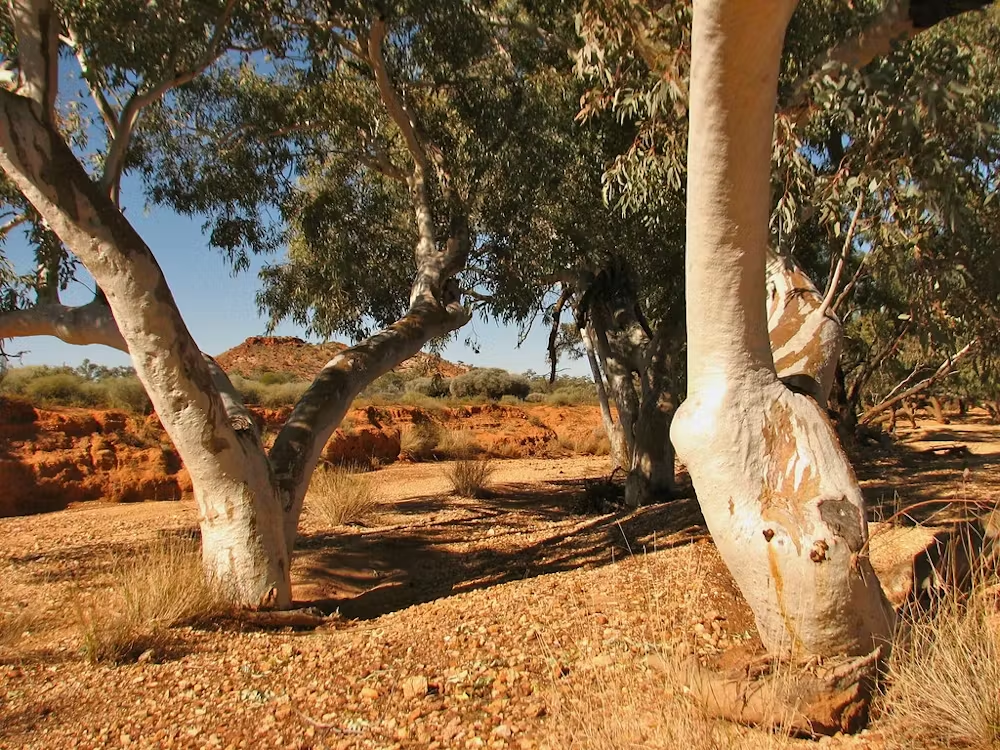
Snow gum
Snow gum (Eucalyptus pauciflora) is the species of eucalypt that many of us associate with the snow fields and the high country. The trees are renowned for their contorted and twisted shapes that are sculptured by bitterly cold, driving winds, snow and ice. This turbulent weather kills off the growing shoots of stems and branches, which re-shoot in the following spring and result in the tortured form.
Snow gums are renowned for being tough survivors in a harsh environment. They range in size from only a few metres high in places subjected to regular strong winds, but when protected from harsh conditions or in more favourable sites, they can grow to be over 25-metres tall.
They have a large mallee root (a stem scrunched into a ball at the base of the trunk, officially known as a lignotuber) that allows them to re-sprout after damage to the canopy and trunk. This means many snow gums are much older than their current size may indicate.
Current trunks may be a few centuries old, but the massive mallee roots that are largely underground may be much, much older. While these mallee roots can cope with fires (which have been rare in the high country), as the climate changes and fires become more frequent and intense, snow gums may be one of the eucalypt species susceptible to change.
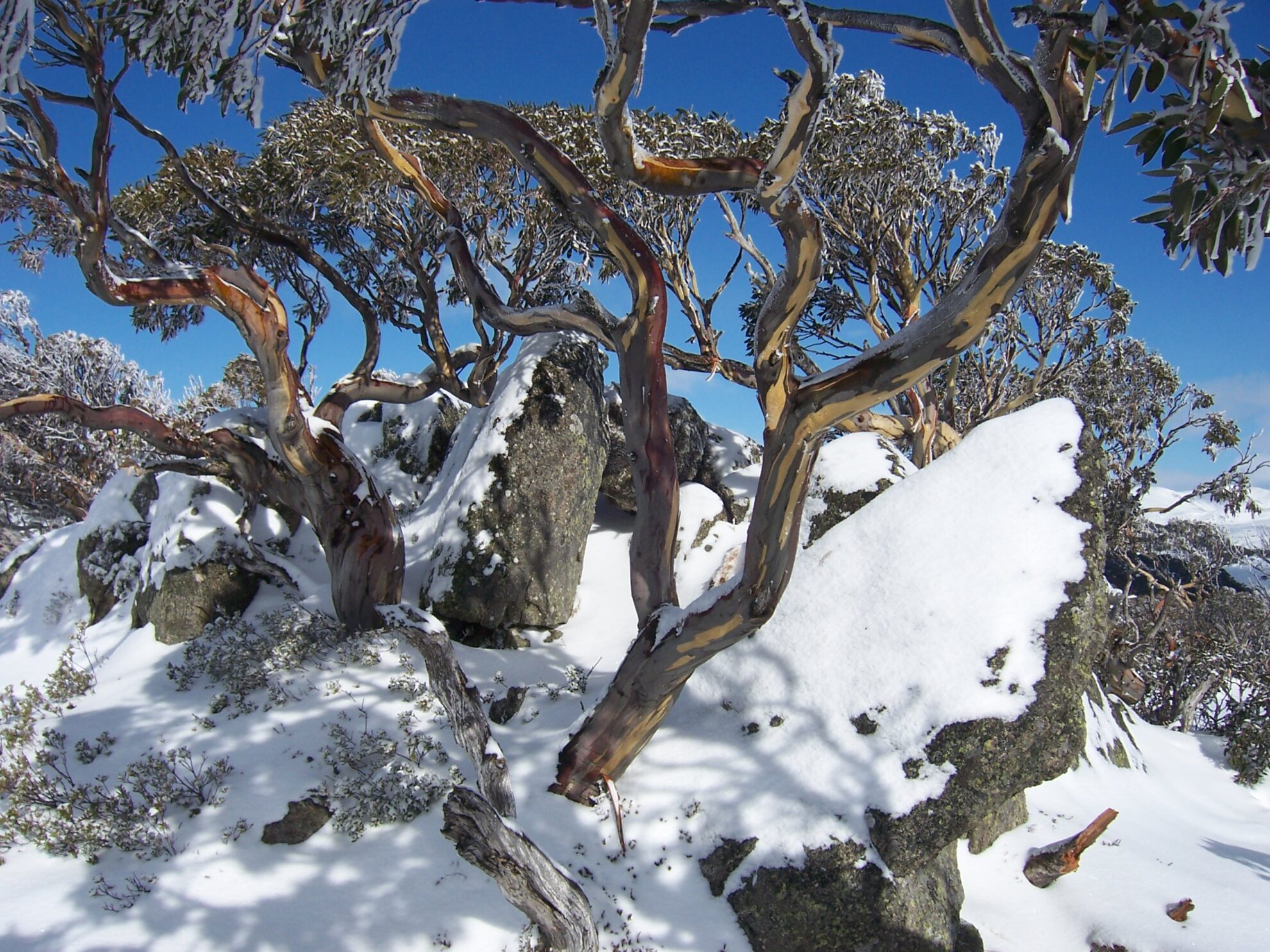
Messmate stringy bark
Messmate stringy bark (Eucalyptus obliqua) is a wonderfully versatile eucalypt. It is probably best known for its timber, often referred to as Tassie Oak, which is a fine hardwood for making furniture and beautiful, polished floors that, with proper care, can last for two or more centuries.
Trees growing on Bruney Island off the Tasmanian coast were the first eucalypts named by European science, so the species has a special place in eucalypt taxonomy.
They are a resilient tree that copes with environmental stresses well. After bushfires, trees re-shoot from dormant buds (called epicormic buds) under the bark that give the branches and trunk a toothbrush-like appearance. If the whole above-ground part of the tree is killed, then most messmates can produce new trunks from the below-ground lignotuber (mallee root). They can grow into massive trees with huge branches that tell of their long-lived experience.
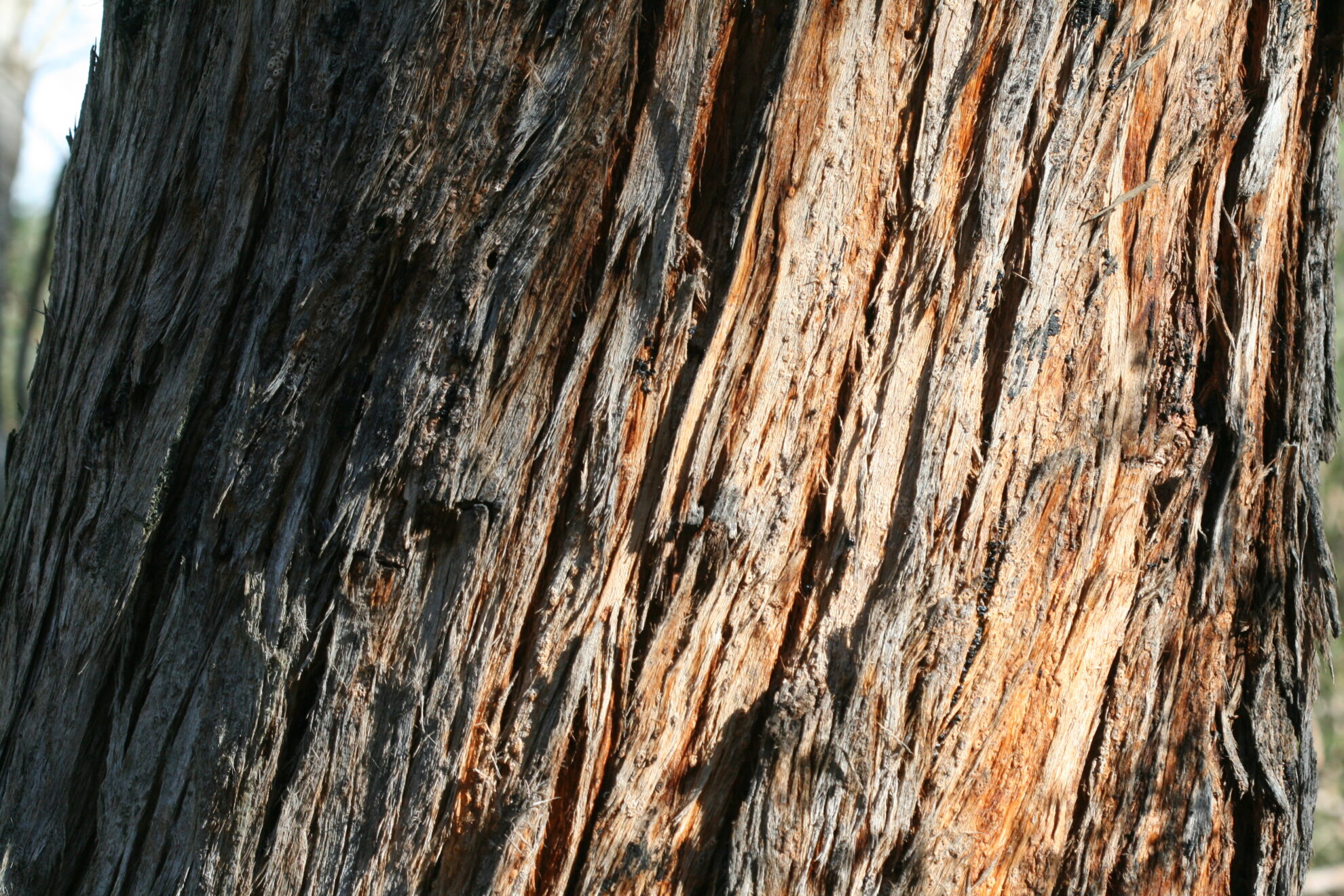
Bull mallee
Bull mallee (Eucalyptus behriana) predominately grows on the great basalt plains of Victoria and South Australia. It has the typical mallee form of multiple trunks, rarely grows above about ten-metres high and grows in some tough parts of the country.
As a mallee, some trees can have a massive lignotuber (mallee root), almost all of which is underground. It is slow growing in arid environments and trunks that are only 20-centimetres in diameter can be 200 to 300 years old – but this is not the age of the tree. Sometimes multiple trunks arise from a ring of what’s left of a huge lignotuber that is three to four metres across. These trees could be centuries or even millennia old, but perhaps we will never know.
Thousands of bull mallee trees were felled to clear land for farming and their mallee roots were sold for use in household fires. They were prized for their great, slow burning and high heat generation.
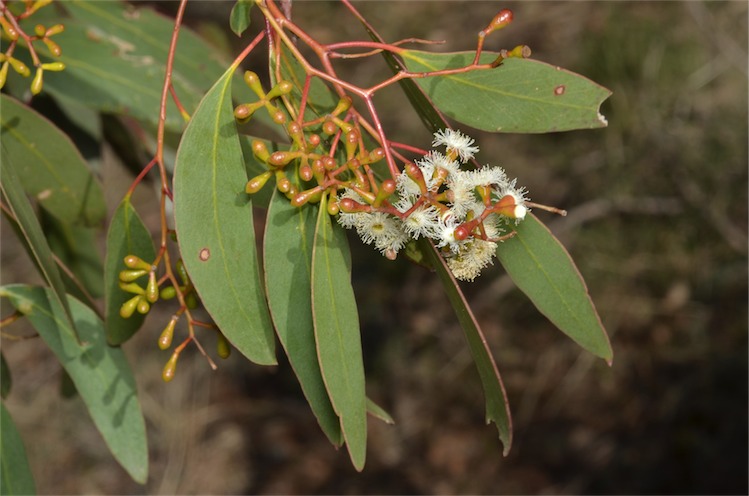
Mountain Ash
Mountain ash (Eucalyptus regnans) is the tallest hardwood, flowering tree in the world that can reach over 90-metres in height. They may have been the tallest trees in the world, but that mantle is held by the Californian coastal redwood (Sequoia sempervirens), as the tallest mountain ash were felled as part of widespread logging in the 1800s.
Despite their huge size, they are quick to grow and even the oldest are rarely over 400 years of age. Their Latin name regnans, meaning ‘to reign’, speaks to their majesty and dominance in the wet forests of Tasmania and Victoria where they grow.
They are awe inspiring, but vulnerable trees. They have been extensively logged and their range restricted. They are often killed by bush fires and their future is clouded by the impacts of climate change.
The dethroning of this king of the eucalypts would be a cultural, climatic and environmental tragedy that would do Shakespeare proud.
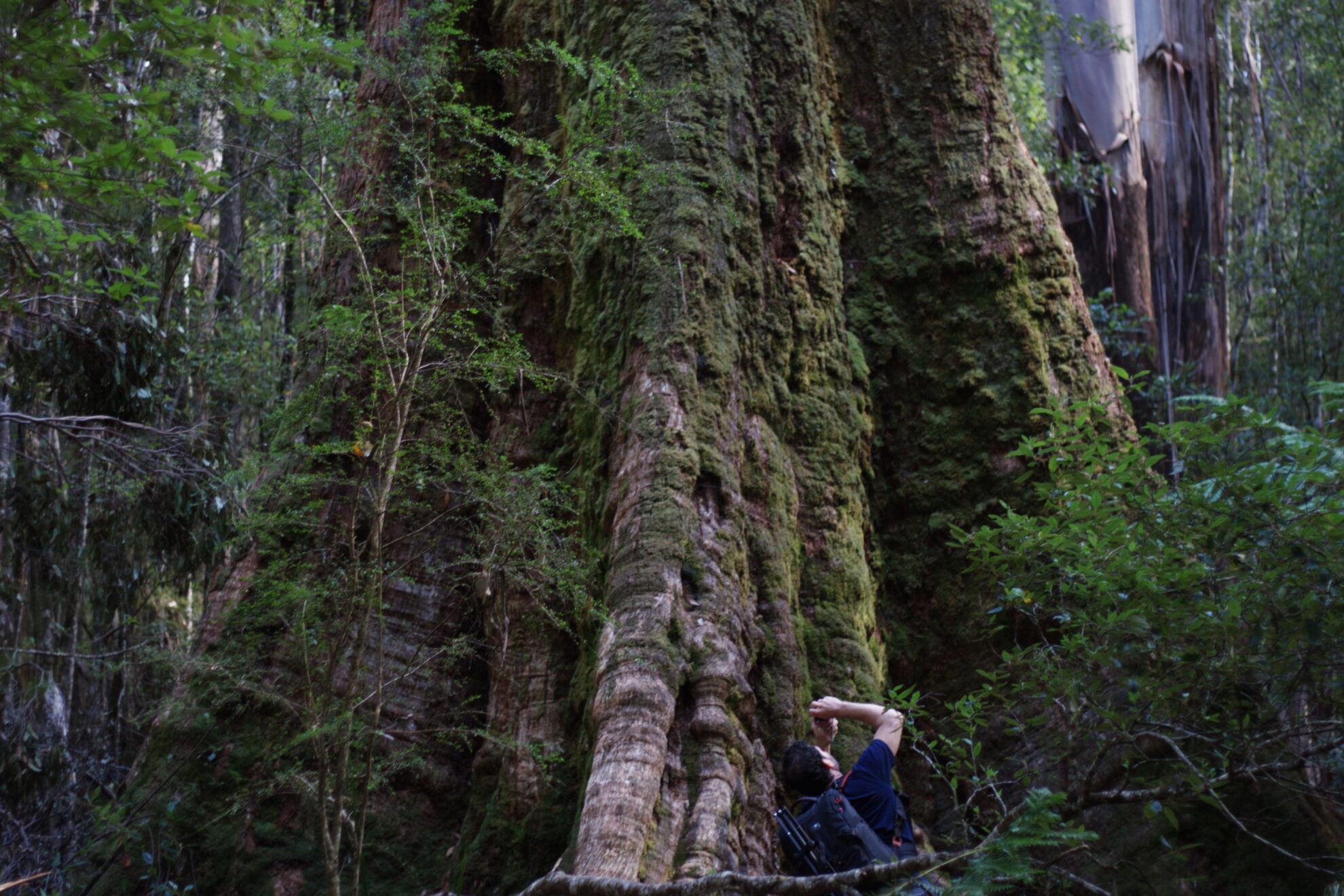
Gregory M Moore, Senior Research Associate, School of Agriculture, Food and Ecosystem Science, University of Melbourne
Note: For Eucalyptus: The Opera, we’ve partnered with Bush Heritage Australia, a leading not-for-profit conservation organisation driven by the vision of Healthy Country Protected Forever. Learn more about it, and help support it, by visiting their website.
